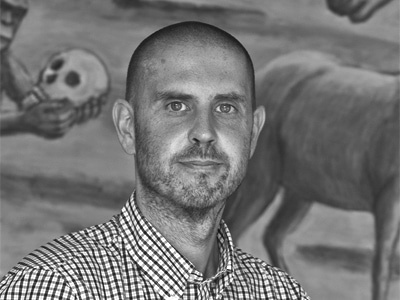Rock Hushka is Director of Curatorial Administration and Curator of Contemporary and Northwest Art at Tacoma Art Museum, Tacoma, Washington, USA. His museum is the major collector of craft—including contemporary jewelry—in the Seattle region. Along with the Bellevue Arts Museum, which doesn’t have a collection, the Tacoma Art Museum is responsible for making Washington a dynamic place to see contemporary jewelry. In 2010, Hushka gave the AJF lecture at SOFA NY, which you can read on the AJF website.
I had the opportunity to speak with Hushka in 2011. We spent some time walking around the museum, looking at the different spaces and talking about the institution’s relationship with contemporary jewelry.
Damian Skinner: What’s the responsibility of the museum to different kinds of culture?
Rock Hushka: Well, our director is really keen on making sure that our collections and exhibitions relate to the entire community in various ways. It can be a community show, meaning something really popular like Norman Rockwell or St John’s Bible, or it can be an exhibition like HIDE/SEEK: Difference and Desire in American Portraiture that speaks to a specific community of people. I’ve found that thematic shows can help address community needs better than one person shows, although Norman Rockwell is wildly popular with elderly white people of a certain generation.
Do you collect all kinds of art?
Rock Hushka: All types of art, but mainly artists of the Pacific Northwest. We do have legacy collections. We have a major collection of Japanese woodblock prints, we have a small collection of European Impressionists, and we have some American works from the American-British colonial era to the early twentieth century. But, I would say two thirds of our collection are works by Northwest artists.
What do you mean by the Northwest?
Rock Hushka: It covers western Montana, Idaho, Oregon, Washington and British Columbia and with an eye towards Alaska. So here we encounter contemporary jewelry. This is a recent acquisition by Trudee Hill.
Tell me about the curatorial team. What’s your official title?
Rock Hushka: Director of Curatorial Administration and Curator of Contemporary and Northwest Art. My colleague Margaret Bullock is Curator of Collections and Special Projects, so she deals in more of the historic material from the 1950s and earlier.
What role does contemporary jewelry have within the program? For example, how often do you have exhibitions?
Rock Hushka: My vision is to have one or two projects a year, plus a permanent collection open storage in one of our galleries. We plan a major project about every three to five years. It is usually thematic in scope, but on occasion it’s a survey of a Northwest artist, such as Nancy Worden.
Have you begun to think about what your next big thematic survey is going to be?
Rock Hushka: No is the short answer. The more complicated answer is it will probably be based on the talk I gave at SOFA NY in 2010, which explored the notions of how jewelry is worn and what it means to the wearer and the viewer; a play on all of those emotions. One of the things that it might do is look at the collectors who are patrons of the museum—how they build their collections and what are their connections with the ideas and the artists. I think that’s a really interesting way to think about collecting and how its different than collecting paintings or photographs. These things are worn and adopted. They become like totems or amulets for the wearer.
This is this case always dedicated to jewelry?
Rock Hushka: It has been since I’ve been here, but I’ve got a plan.
Can you tell me what that plan is?
Rock Hushka: We do these small, what I call ‘vest pocket’ exhibitions of artists or works from the collection. We have works by Seattle ceramist Howard Kottler in these adjacent cases. It’s sort of a retrospective from purportedly his first pot made in the late 1950s to his later massive monumental work called Devil Dog Walk, which is essentially a self portrait. Kottler died of pneumonia in late 1994.
That’s a sad end.
Rock Hushka: He did not have an uneventful life, so we can celebrate all of the things he did. These works are all from our collection, with the exception of some of the earlier works, which are loans from a private collector. In anticipation of the 2012 NCECA ceramics conference, we’ll supplement the display with additional works from other collectors, and then we’ll publish a little brochure.
How did the museum come to represent so many kinds of art?
Rock Hushka: That’s one of the good things about being in the far west. The boundaries of the fine art world were slowly chipped away, largely from craft traditions in this part of the world and people such as Howard Kottler and Dale Chihuly. There is this fluidity between process and object and conceptual foundation. I think that’s a really fascinating thing about this region’s history.
Has contemporary jewelry always been collected by the museum?
Rock Hushka: We started collecting in the early 1990s, right after we did a Ken Cory project. The jewelry collection is the fastest growing component of our permanent collection. I’ve tried to be really thoughtful about how we grow it. I’ve been a little bit conservative in a certain way, in that I’ve always focused more on narrative jewelry rather than wearable, purely decorative, more production-line stuff. I’ve shied away from that because it’s easier to tell the story to a visitor. Artists like Nancy Worden or Ken Cory or Laurie Hall or Kiff Slemmons have really infused their works with certain kinds of meaning, so to preserve that history has been first and foremost on my docket. But now that I’m feeling a little bit more comfortable with the history and the tradition and the makers, I’ve slowly been bringing in other kinds of work. Although, in a museum context, its way easier if there’s narrative content.
How long have you been working at the museum?
Rock Hushka: Eleven years.
So the collecting of contemporary jewelry started before you?
Rock Hushka: Right. It began largely with the advocacy of Nancy Worden and her help with the Ken Cory estate and the work of former curator Barbara Johns. A lot of interesting forces came to bear on the moment that led to collecting contemporary jewelry. We are supported by an active group of collectors in this region.
How big is the jewelry collection?
Rock Hushka: About 290 objects.
And how big is the museum’s collection overall?
Rock Hushka: About 4200 objects. Here’s the gallery that relates to the grand plan I mentioned earlier. The plan started with the Nancy Worden and Helen Drutt show in 2009. To re-engage with the permanent collection, we built these four cases. The next phase is to reconfigure them in this gallery space. We’ll use the top of these plus wall-mounted cases for the Flora Book exhibition. There are about 30 works in the show with a small publication. We’ll have the cases positioned in such a way that we’ll be able to rotate other jewelry shows in this gallery.
So this will become a dedicated contemporary jewelry gallery?
Rock Hushka: Yes, for the foreseeable future.
In terms of contemporary jewelry, is there a Northwest aesthetic or movement?
Rock Hushka: I think there are a number of them that sort of entwine. There’s the narrative jewelry, the Ken Cory-Ramona Solberg group, that comes from Pop in 1960s, the hippie movement, and using found objects. There’s this other, more refined kind of conceptual practice that’s being beautifully developed and articulated by people like Anya Kivarkis at the University of Oregon.
In Washington State, we’re at a very peculiar moment because the University of Washington has ended its program. Ellensburg is experiencing an interesting moment as Keith Lewis focuses more on administrative work within the university rather than training students. So, how is jewelry going to develop here? I think most people would describe it as a crisis moment, although everyone’s very reluctant to give it that name because of its dire consequences. What Pratt, a fine arts sort of workshop institution, does in Seattle, and what Cornish College does, could be interesting. What the University of Washington does will matter. It’s hard to say what’s going to happen without a way to generate subsequent artists and train them and teach them the history and give them the parameters from which to create. It’s hugely problematic.
There has to be a focus. Formerly, The University of Washington was that center. There was this ability to bring people from around the country to the university as visiting artists and as lecturers because there were students. Now what’s going to happen when there’s not that center? That intellectual energy has most definitely shifted to the Oregon School of Arts and Crafts and the University of Oregon. All of that creative energy is there. I don’t believe it’s the role of the museum to be that. My job as an archivist is to give meaning to it and to correct or revise the artists on the record. And if there’s nothing to revise, then we have a problem. So, I think the next five to ten years will be crucial. There are support mechanisms—there’s a very active Seattle Metals Guild, there’s the Fine Arts Center, there’s Artists Trusts—but will it be enough? Will it do more than draw people here? Will it be a way to let people churn and define who they are and present that to the rest of the world? Or will it be just this accumulation of really interesting people who are focusing their energy outward?
Do you also take any responsibility or have any interest in collecting items of contemporary jewelry that are not from here but are somehow critical to the story?
Rock Hushka: Absolutely. We have a very small number of those kinds of works, ranging from Swiss artist Verena Sieber-Fuchs to people like Robin Kranitzky and Kim Overstreet. We’ve also just collected a work by Ford & Forlano because of Cynthia Toops relationship with them and polymer jewelry. So yes, when really good works come to us as gifts, then we very carefully consider them. When there’s not a connection, then it becomes really tricky. Our collection committee and Director are very focused on our goal of becoming the premier collection of Northwest art. What that means is somewhat fungible. It’s amorphous, and it means different things on different days, but we do have a collection plan. We have goals. The Flora Book exhibition is one example. In 1986 and 1987, we did a project with Flora. The recent project was sort of a survey, a documentation of her career from the early 1980s to the present. It was fun.
Are you interested in forming relationships with collectors to develop the museum collection?
Rock Hushka: Yes. There are a couple of things that come to mind when you ask that. One is the responsibility of a collector. It’s not just to amass things. The tricky questions are: what does it mean to move from a private collection, a useful collection, into an archive; and is there the understanding that there is usually some refinement? We can’t take everything. We can’t keep everything. The longterm care and cost associated with an object, the intellectual enterprises surrounding the object, and the securing the patronage aspect…that’s just one component. Then there are other, really fascinating things that the collector won’t see, can’t see, and shouldn’t see. Things they should let the curators figure out.
Given your focus on Northwest art, would you also be interested in good examples of jewelry from other places that cast light onto Northwest cultural production?
Rock Hushka: If a collection was offered or if there was an opportunity to acquire such jewelry, we would very seriously consider it because of the role that jewelry has played in this region and its connections with the rest of the art.
Do you have an acquisitions budget?
Rock Hushka: A very, very modest one. We have the Ramona Solberg endowment, which we doubled recently. Our last purchase with those funds was Nancy Worden’s Frozen Dreams from her Loud Bones exhibition here. We’ll have to let those funds accrue for a while now. We’ve just acquired a Trudee Hill work, and we’ve just been gifted a Ford & Forlano necklace and nice Laurie Hall example. Part of our endowment campaign includes a $1.5 million dollar fund for endowment and acquisitions.
Tell me about your audience. What’s the Tacoma community like?
Rock Hushka: It’s fairly diverse in terms of ethnicity. Income and education are at slightly lower levels than Seattle. We have everything from Port Tacoma longshoremen to blue collar transportation to light manufacturing, and then there’s the university and a downtown core of financial services and internet startups, so pretty diverse. The survey we’ve done shows our primary visitor is female, 55 and over, usually with grandchildren. A lot of families and a lot of school tours visit, largely white. Our visitorship reflects, per capita, the demographics of the county. We keep track by zip code analysis. We’d like to increase our number of African American and Latino visitors. We found that our biggest barrier is affordability, because Tacoma is largely a blue collar area.

I had the opportunity to speak with Hushka in 2011. We spent some time walking around the museum, looking at the different spaces and talking about the institution’s relationship with contemporary jewelry.
Damian Skinner: What’s the responsibility of the museum to different kinds of culture?
Rock Hushka: Well, our director is really keen on making sure that our collections and exhibitions relate to the entire community in various ways. It can be a community show, meaning something really popular like Norman Rockwell or St John’s Bible, or it can be an exhibition like HIDE/SEEK: Difference and Desire in American Portraiture that speaks to a specific community of people. I’ve found that thematic shows can help address community needs better than one person shows, although Norman Rockwell is wildly popular with elderly white people of a certain generation.
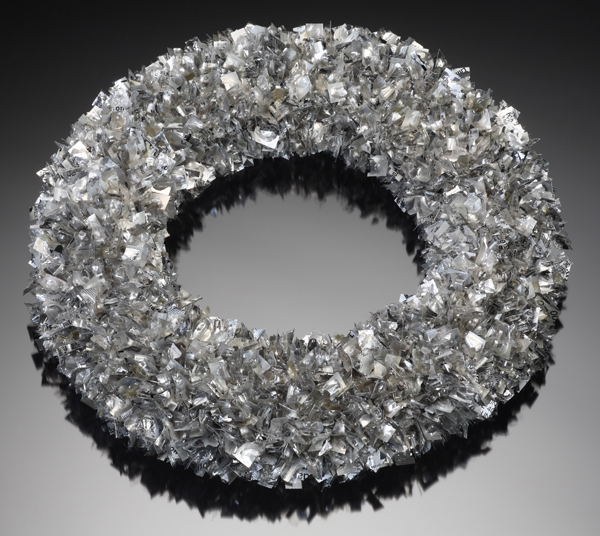
Rock Hushka: All types of art, but mainly artists of the Pacific Northwest. We do have legacy collections. We have a major collection of Japanese woodblock prints, we have a small collection of European Impressionists, and we have some American works from the American-British colonial era to the early twentieth century. But, I would say two thirds of our collection are works by Northwest artists.
What do you mean by the Northwest?
Rock Hushka: It covers western Montana, Idaho, Oregon, Washington and British Columbia and with an eye towards Alaska. So here we encounter contemporary jewelry. This is a recent acquisition by Trudee Hill.
Tell me about the curatorial team. What’s your official title?
Rock Hushka: Director of Curatorial Administration and Curator of Contemporary and Northwest Art. My colleague Margaret Bullock is Curator of Collections and Special Projects, so she deals in more of the historic material from the 1950s and earlier.
What role does contemporary jewelry have within the program? For example, how often do you have exhibitions?
Rock Hushka: My vision is to have one or two projects a year, plus a permanent collection open storage in one of our galleries. We plan a major project about every three to five years. It is usually thematic in scope, but on occasion it’s a survey of a Northwest artist, such as Nancy Worden.
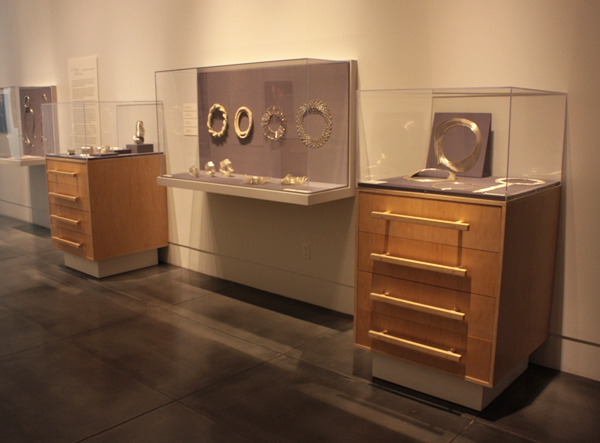
Have you begun to think about what your next big thematic survey is going to be?
Rock Hushka: No is the short answer. The more complicated answer is it will probably be based on the talk I gave at SOFA NY in 2010, which explored the notions of how jewelry is worn and what it means to the wearer and the viewer; a play on all of those emotions. One of the things that it might do is look at the collectors who are patrons of the museum—how they build their collections and what are their connections with the ideas and the artists. I think that’s a really interesting way to think about collecting and how its different than collecting paintings or photographs. These things are worn and adopted. They become like totems or amulets for the wearer.
This is this case always dedicated to jewelry?
Rock Hushka: It has been since I’ve been here, but I’ve got a plan.
Can you tell me what that plan is?
Rock Hushka: We do these small, what I call ‘vest pocket’ exhibitions of artists or works from the collection. We have works by Seattle ceramist Howard Kottler in these adjacent cases. It’s sort of a retrospective from purportedly his first pot made in the late 1950s to his later massive monumental work called Devil Dog Walk, which is essentially a self portrait. Kottler died of pneumonia in late 1994.
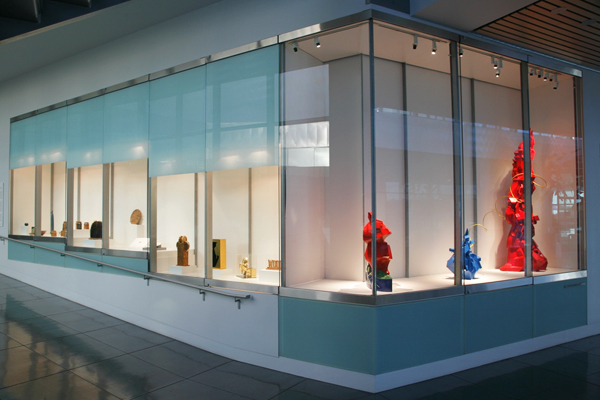
That’s a sad end.
Rock Hushka: He did not have an uneventful life, so we can celebrate all of the things he did. These works are all from our collection, with the exception of some of the earlier works, which are loans from a private collector. In anticipation of the 2012 NCECA ceramics conference, we’ll supplement the display with additional works from other collectors, and then we’ll publish a little brochure.
How did the museum come to represent so many kinds of art?
Rock Hushka: That’s one of the good things about being in the far west. The boundaries of the fine art world were slowly chipped away, largely from craft traditions in this part of the world and people such as Howard Kottler and Dale Chihuly. There is this fluidity between process and object and conceptual foundation. I think that’s a really fascinating thing about this region’s history.
Has contemporary jewelry always been collected by the museum?
Rock Hushka: We started collecting in the early 1990s, right after we did a Ken Cory project. The jewelry collection is the fastest growing component of our permanent collection. I’ve tried to be really thoughtful about how we grow it. I’ve been a little bit conservative in a certain way, in that I’ve always focused more on narrative jewelry rather than wearable, purely decorative, more production-line stuff. I’ve shied away from that because it’s easier to tell the story to a visitor. Artists like Nancy Worden or Ken Cory or Laurie Hall or Kiff Slemmons have really infused their works with certain kinds of meaning, so to preserve that history has been first and foremost on my docket. But now that I’m feeling a little bit more comfortable with the history and the tradition and the makers, I’ve slowly been bringing in other kinds of work. Although, in a museum context, its way easier if there’s narrative content.
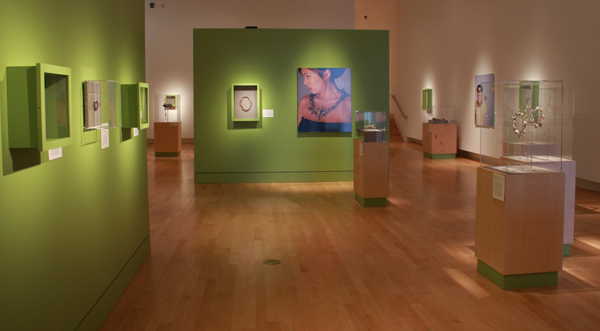
Rock Hushka: Eleven years.
So the collecting of contemporary jewelry started before you?
Rock Hushka: Right. It began largely with the advocacy of Nancy Worden and her help with the Ken Cory estate and the work of former curator Barbara Johns. A lot of interesting forces came to bear on the moment that led to collecting contemporary jewelry. We are supported by an active group of collectors in this region.
How big is the jewelry collection?
Rock Hushka: About 290 objects.
And how big is the museum’s collection overall?
Rock Hushka: About 4200 objects. Here’s the gallery that relates to the grand plan I mentioned earlier. The plan started with the Nancy Worden and Helen Drutt show in 2009. To re-engage with the permanent collection, we built these four cases. The next phase is to reconfigure them in this gallery space. We’ll use the top of these plus wall-mounted cases for the Flora Book exhibition. There are about 30 works in the show with a small publication. We’ll have the cases positioned in such a way that we’ll be able to rotate other jewelry shows in this gallery.
So this will become a dedicated contemporary jewelry gallery?
Rock Hushka: Yes, for the foreseeable future.
In terms of contemporary jewelry, is there a Northwest aesthetic or movement?
Rock Hushka: I think there are a number of them that sort of entwine. There’s the narrative jewelry, the Ken Cory-Ramona Solberg group, that comes from Pop in 1960s, the hippie movement, and using found objects. There’s this other, more refined kind of conceptual practice that’s being beautifully developed and articulated by people like Anya Kivarkis at the University of Oregon.
In Washington State, we’re at a very peculiar moment because the University of Washington has ended its program. Ellensburg is experiencing an interesting moment as Keith Lewis focuses more on administrative work within the university rather than training students. So, how is jewelry going to develop here? I think most people would describe it as a crisis moment, although everyone’s very reluctant to give it that name because of its dire consequences. What Pratt, a fine arts sort of workshop institution, does in Seattle, and what Cornish College does, could be interesting. What the University of Washington does will matter. It’s hard to say what’s going to happen without a way to generate subsequent artists and train them and teach them the history and give them the parameters from which to create. It’s hugely problematic.
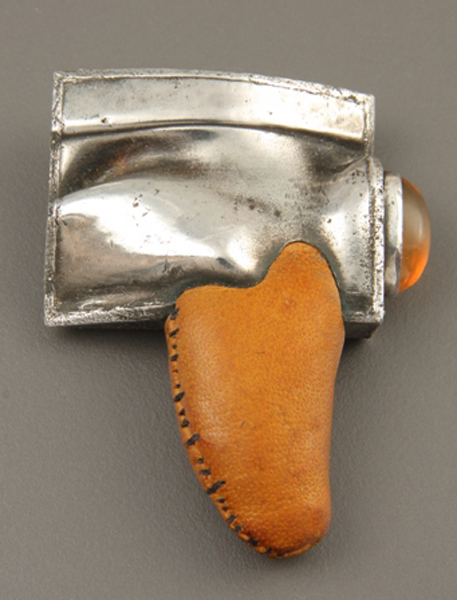
There has to be a focus. Formerly, The University of Washington was that center. There was this ability to bring people from around the country to the university as visiting artists and as lecturers because there were students. Now what’s going to happen when there’s not that center? That intellectual energy has most definitely shifted to the Oregon School of Arts and Crafts and the University of Oregon. All of that creative energy is there. I don’t believe it’s the role of the museum to be that. My job as an archivist is to give meaning to it and to correct or revise the artists on the record. And if there’s nothing to revise, then we have a problem. So, I think the next five to ten years will be crucial. There are support mechanisms—there’s a very active Seattle Metals Guild, there’s the Fine Arts Center, there’s Artists Trusts—but will it be enough? Will it do more than draw people here? Will it be a way to let people churn and define who they are and present that to the rest of the world? Or will it be just this accumulation of really interesting people who are focusing their energy outward?

Rock Hushka: Absolutely. We have a very small number of those kinds of works, ranging from Swiss artist Verena Sieber-Fuchs to people like Robin Kranitzky and Kim Overstreet. We’ve also just collected a work by Ford & Forlano because of Cynthia Toops relationship with them and polymer jewelry. So yes, when really good works come to us as gifts, then we very carefully consider them. When there’s not a connection, then it becomes really tricky. Our collection committee and Director are very focused on our goal of becoming the premier collection of Northwest art. What that means is somewhat fungible. It’s amorphous, and it means different things on different days, but we do have a collection plan. We have goals. The Flora Book exhibition is one example. In 1986 and 1987, we did a project with Flora. The recent project was sort of a survey, a documentation of her career from the early 1980s to the present. It was fun.
Are you interested in forming relationships with collectors to develop the museum collection?
Rock Hushka: Yes. There are a couple of things that come to mind when you ask that. One is the responsibility of a collector. It’s not just to amass things. The tricky questions are: what does it mean to move from a private collection, a useful collection, into an archive; and is there the understanding that there is usually some refinement? We can’t take everything. We can’t keep everything. The longterm care and cost associated with an object, the intellectual enterprises surrounding the object, and the securing the patronage aspect…that’s just one component. Then there are other, really fascinating things that the collector won’t see, can’t see, and shouldn’t see. Things they should let the curators figure out.
Given your focus on Northwest art, would you also be interested in good examples of jewelry from other places that cast light onto Northwest cultural production?
Rock Hushka: If a collection was offered or if there was an opportunity to acquire such jewelry, we would very seriously consider it because of the role that jewelry has played in this region and its connections with the rest of the art.
Do you have an acquisitions budget?
Rock Hushka: A very, very modest one. We have the Ramona Solberg endowment, which we doubled recently. Our last purchase with those funds was Nancy Worden’s Frozen Dreams from her Loud Bones exhibition here. We’ll have to let those funds accrue for a while now. We’ve just acquired a Trudee Hill work, and we’ve just been gifted a Ford & Forlano necklace and nice Laurie Hall example. Part of our endowment campaign includes a $1.5 million dollar fund for endowment and acquisitions.

Tell me about your audience. What’s the Tacoma community like?
Rock Hushka: It’s fairly diverse in terms of ethnicity. Income and education are at slightly lower levels than Seattle. We have everything from Port Tacoma longshoremen to blue collar transportation to light manufacturing, and then there’s the university and a downtown core of financial services and internet startups, so pretty diverse. The survey we’ve done shows our primary visitor is female, 55 and over, usually with grandchildren. A lot of families and a lot of school tours visit, largely white. Our visitorship reflects, per capita, the demographics of the county. We keep track by zip code analysis. We’d like to increase our number of African American and Latino visitors. We found that our biggest barrier is affordability, because Tacoma is largely a blue collar area.
